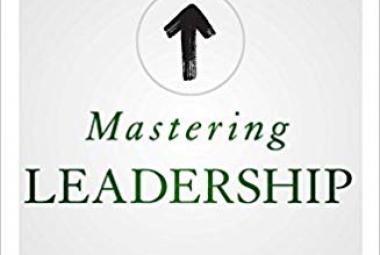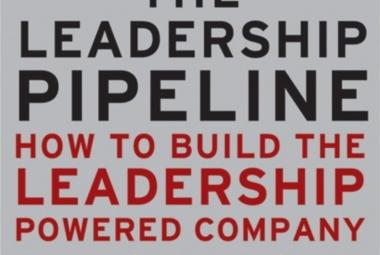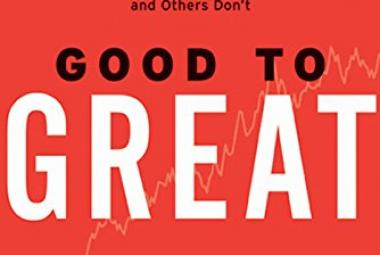In The Culture Code, Daniel Coyle describes the importance of company culture within successful organizations. In a series of experiments in which groups of people have to build the highest possible tower with spaghetti, tape and 1 marshmallow within a certain time, small children beat the CEOs, lawyers and students of a university time and time again. The reason? Where adults are concerned with politics, hierarchy and discussing strategy and options, the children simply get to work. Together. Side by side.
What is the difference between these groups of adults and those of the children? The answer is: culture. A Harvard study with 200 organizations showed that the culture factor can have an impact on the net income of the organization of 765% over 10 years compared to other organizations.
In this book, Coyle describes three factors that influence the organizational culture and also the difference between the group of children and adults from the marshmallow tower experiment: having a sense of security, being able to be vulnerable within your team, and clear group goals.
In part one of the book, Coyle describes THE IMPORTANCE OF A SAFE ENVIRONMENT at work. Only when people feel safe within a group do they feel that they are part of the group. When we feel part of the group, as a family, we work together better. To create a safe environment in which people work better together, Coyle describes the following tips, among others:
Don't give suckers, slackers and downers a chance in your group. People who are unfriendly to each other, refuse to pick up work, or because of their attitude lower the energy from the rest of the group are not in the right place in the organization. One person that fits one of the categories above can reduce the quality of the work of the entire group by 30-40%! Some leaders can counteract negativity by creating safety in the group, but in most cases, it is easier to remove the sucker, slacker or downer from the team.
Have team members sit physically close together. The Allen Curve describes the relationship between the distance between the workplace of team members and the amount of communication between them. When team members are at most 8 meters apart today, the amount of communication goes through the roof, both analogue and digital, and projects are completed better and faster.
You can also improve the feeling of safety within a group with communication. Listen to your colleagues with open body positions, be generous in thanking others for their contribution, and "hug the messenger" instead of shooting him, so that people know they can be open and honest with each other without being punished.
Part two of the book describes the importance of "SHARED VULNERABILITY" with which Coyle describes that people dare to be vulnerable towards each other so that mutual trust between teammates increases.
The first step to take this cultural step as a manager is to give "notifications" instead of assignments. "I see this, do you see that too?" You can also make yourself vulnerable by being open about the complexity of a problem: "I don't know the solution, who has an idea to address this?" .
To encourage people to be open and to be vulnerable, you can ask personal questions on a business level: "What do you like most about this project?" or, “ what do you like most about this way of working?", or on a personal level:" What is your biggest dream that you have not yet realized? "
In the best teams ultimately arises, what Coyle describes as the vulnerability loop, a loop in which a first person takes an open and vulnerable position, after which a second person feels safe enough to also be vulnerable by indicating that he experiences the same, or maybe wants to share another personal story.
When people dare to express themselves freely and vulnerable towards each other, you can use this openness in feedback sessions. Sessions in which groups are given the opportunity to respond to projects and working methods only adds value when people feel safe (see above) and dare to be vulnerable.
Create A JOINT STORY, with goals and values. Use the self-fulfilling prophecy principle to adjust people's behaviour. In 1965, Rosenthal already proved that when you randomly divide children into "high potential" and "average" groups, the high potentials grew higher in IQ points than the average students (44 versus 19 IQ points in 2 years). The children behaved according to their label, while it was randomly assigned to 20% of the group.
Coyle also describes the use of one-liners to communicate values within the team to encourage certain behaviours. Readers of my book Lean Transformations will recognize that I am a strong believer in this strategy.
Finally, it is important to have clear priorities and to communicate these 10 times more often if you think it is necessary. In one study, executives estimate that 64% of employees knew what the priorities of the organization were and could list them. In practice that was only 2%!
The Culture Code is an interesting book in which it becomes clear that in order to be successful as an organisation, it involves more than just hiring people with the right skills. It fits well with theories about leadership in which you, as a leader, have to be vulnerable in order to improve cooperation in your team. Recommended!
Continue to:
How to Win Friends and Influence People - D.Carnegie (summary)
BRON:
Coyle, D., 2018, The Culture Code – the Secret of Highly Successful Groups, London: Random House Business Books (order this book)















